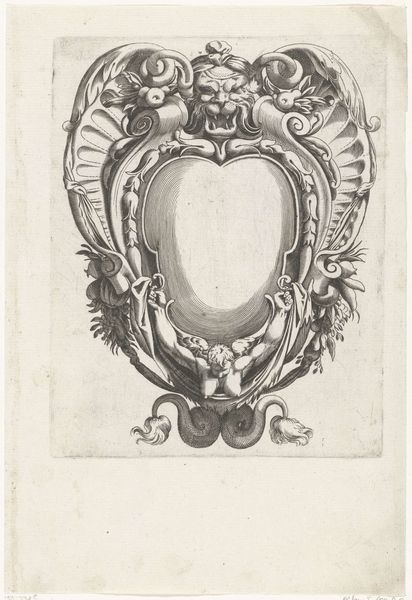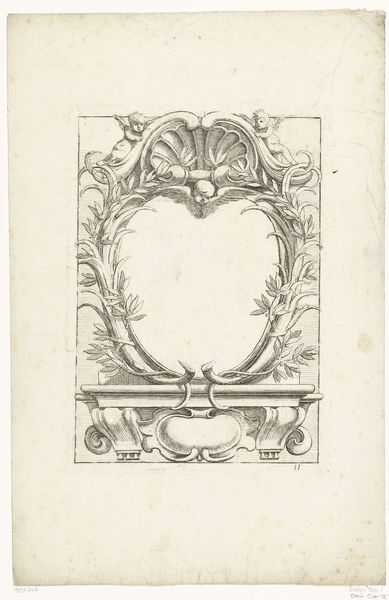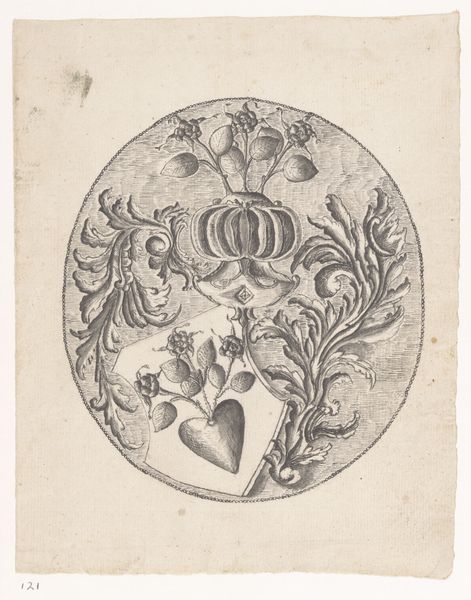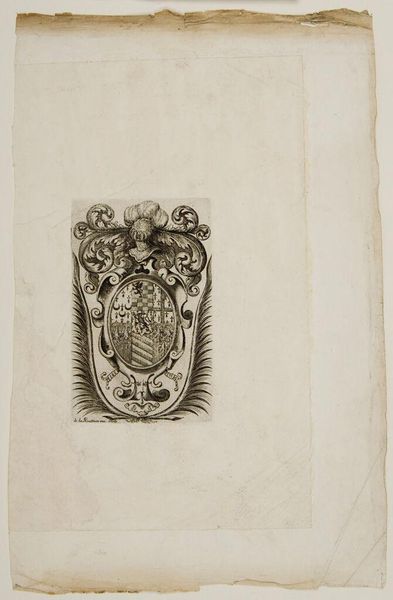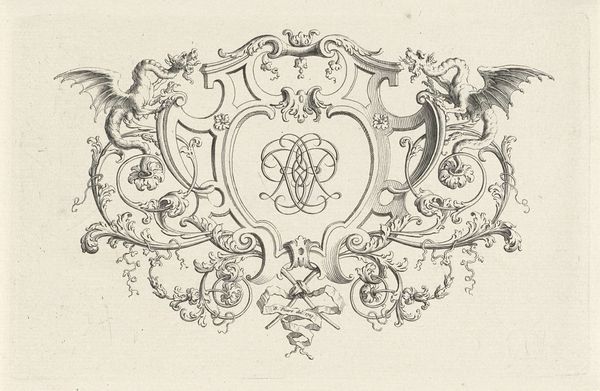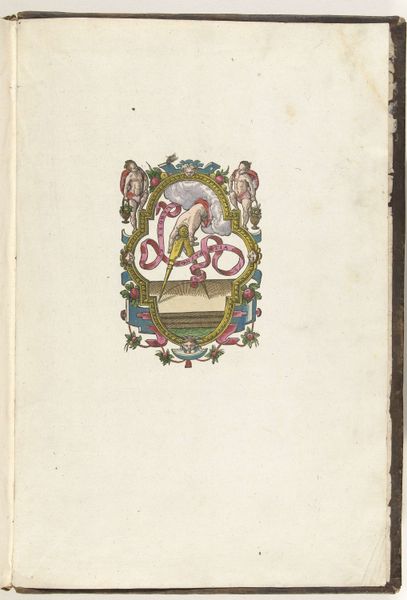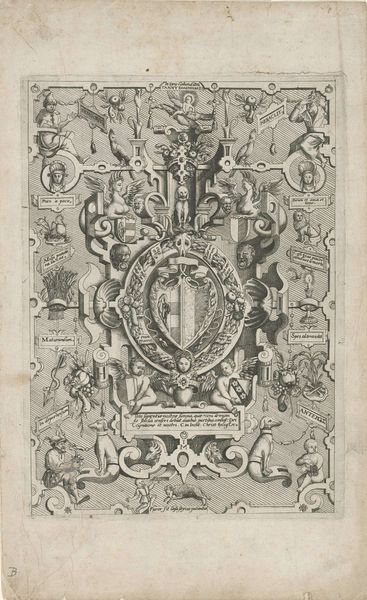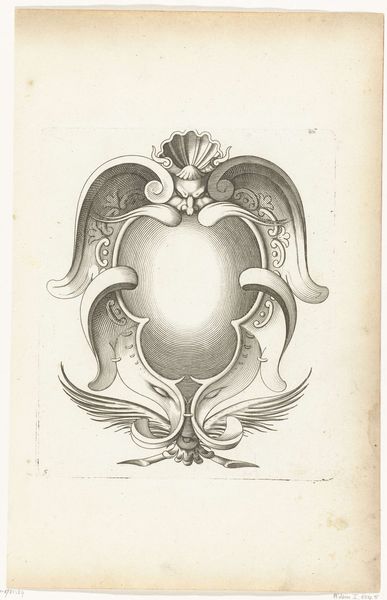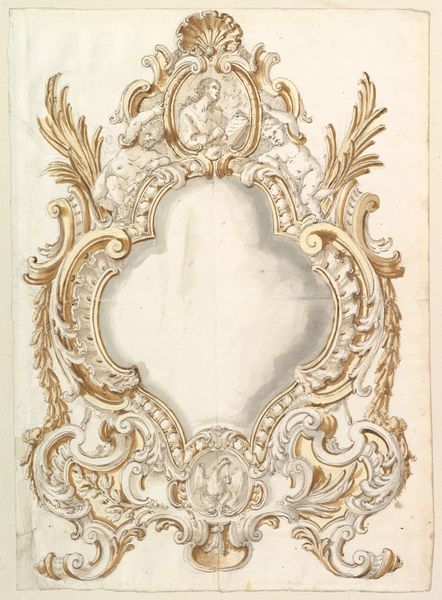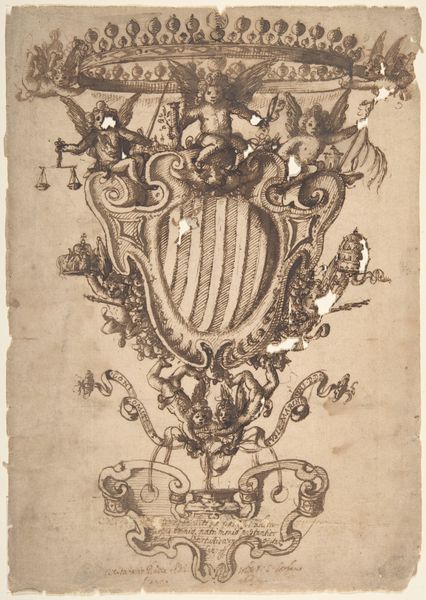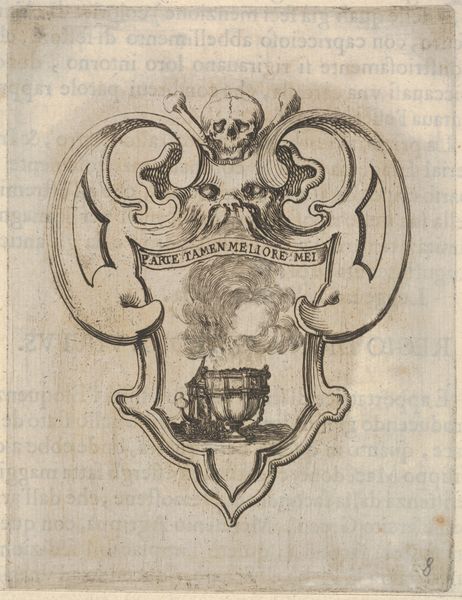
drawing, coloured-pencil, paper, watercolor
#
drawing
#
coloured-pencil
#
baroque
#
paper
#
watercolor
#
coloured pencil
#
watercolour illustration
#
miniature
Dimensions: height 243 mm, width 360 mm
Copyright: Rijks Museum: Open Domain
Editor: This is Gesina ter Borch’s "Verfraaid wapen van de familie Ter Borch," made around 1660. It's a drawing with colored pencil and watercolor on paper. I’m immediately struck by how delicate and ornamental it is, like a beautiful bookplate. What do you see in this piece? Curator: The most potent symbols are often those linked to family. What do you make of the lions within the heart-shaped shield, rendered in these striking hues of red and gold? How do they resonate with your understanding of heraldry as a visual language? Editor: They feel very traditional, a sign of courage or nobility perhaps? But then the angels feel much softer. Curator: Precisely! Consider the context: The Baroque period, steeped in drama, yet restrained by formalized codes. The angels, a seemingly softer symbol, function not just as decoration. Don’t you think that they're actually supporting the weight and legitimacy of family lineage? Do you see how they flank the heraldic device? Almost guardians of the Ter Borch name. Editor: I didn't initially see the angels as supportive, more ornamental. So, the leaves that surround the arms, are those connected with renewal? Curator: Good question. Absolutely, that circular wreath gesture implies continuity, perhaps triumph, while rooting the family in the present and future. Notice how these visual motifs converge, reinforcing the Ter Borch family’s identity and aspirations for generations to come. It speaks volumes about the visual stories families wished to tell about themselves. Editor: I see it now, the blending of strength and legacy with something more hopeful. I hadn't really appreciated the dialogue between all the different elements. Curator: It is remarkable, how these pictorial emblems become vessels holding layered memories and ideals across centuries.
Comments
No comments
Be the first to comment and join the conversation on the ultimate creative platform.
